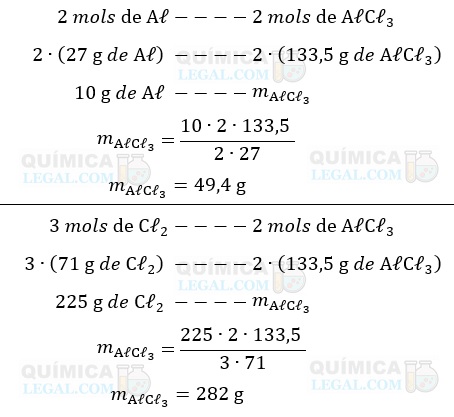Efetuando-se, em laboratório, a reação entre 10 g…
(UPF-RS) Efetuando-se, em laboratório, a reação entre 10 g de alumínio e 225 g de cloro, obtêm-se, no máximo,
a) 20,0 g de cloreto de alumínio.
b) 63,0 g de cloreto de alumínio.
c) 23,0 g de cloreto de alumínio.
d) 49,5 g de cloreto de alumínio.
e) 53,5 g de cloreto de alumínio.
Resolução
Equação química da reação:
2 Aℓ(s) + 3 Cℓ2(g) → 2 AℓCℓ3(s)
São necessários 2 mols de alumínio e 3 mols de gás cloro para produzir 2 mols de cloreto de alumínio. Logo, as quantidades de cloreto de alumínio produzidas a partir de 10 g de alumínio e 225 g de cloro são dadas por:

Como visato acima, a reação entre 10 g de alumínio e 225 g de cloro produz no máximo 49,5 g de cloreto de alumínio. Portanto, o alumínio é o reagente limitante e o gás cloro é o reagente em excesso.
Gabarito: LETRA D
Confira mais EXERCÍCIOS RESOLVIDOS sobre ESTEQUIOMETRIA.
Gostaria de ver mais RESOLUÇÕES COMENTADAS da UPF?

